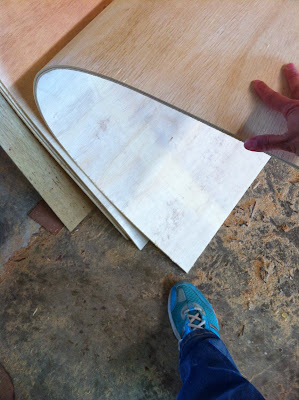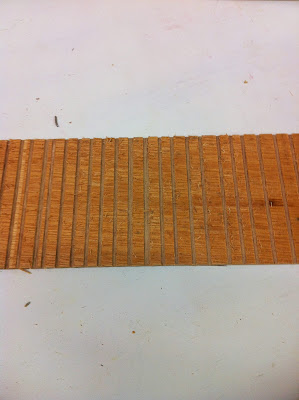When projects stretch out due to engineering complications (or other reasons) the hardest part can be holding my interest so that I solve the problem well and can keep going with as much energy and excitement as when I started. All artists face these issues. I also find that it's one of the biggest issues with art students- how to keep going when it gets tough, or boring, or you run out of money, etc. I find it funny that they think they are the only ones to suffer from this and they are often times surprised when they hear I go through the same issues and do my fair share of struggling, and on a regular basis too.
I am not sure what my point here is except that to the casual viewer, this new series I am working on may seem long and drawn out, but really it's just a blip in the bigger picture. To really be an artist one must work at it all the time, give everything and let the art devour you. The smallest ideas become giant and worth every second you spend on them.
OK. So now onto what I am working on.
The pictures I showed in my previous post showed the sculptures complete in form and put together. However, they were not secure and I want them to be very secure. In fact I want the pieces to be so sound that I can turn them as whole sculptures in any direction and not have shifting or something falling off. This is hard to do, and my years of being a furniture builder have made my conception of this hard. Traditional furniture construction has rules, and that is not how I work. I compose my work. As I build I change it, shift the parts around or make new ones until I get what I like. I am not a planner (unless it's a commission) and want, no, need the option to be flexible in my building. So, my pieces are often times made of parts that are interchangeable and that means they move easily. In theory. In reality some have to be bludgeoned on and off while other parts slide too easy. To the naked eye all the joints look nice and tight, but if you work with wood/plywood you know it doesn't take much, even the humidity will make a joint impossibly annoying to work with. But beside all that at some point, when my symphony is constructed I have to secure the parts. What you don't see here are pictures of the weeks of torture spent trying to figure how to do this and then finally executing it. Ironically, I ended up using the same process as used in furniture; pining with dowel rods. in some cases it was extreme, construction or wood glue in the joint and then 1/2" or 3/8" rods that went very deep and at extreme angles. A good drill and new super sharp bits, one of them 12" long made all the difference. Each sculpture still retains one larger joint that will remain unfixed, as I need to break them down somewhat to get them through doorways and for shipping. Amazingly enough it all worked great, I can turn them in all directions and they are super strong and sound.
Right now I am working on finishing and that always takes forever. The color is super important to me and this time I am taking a new route to a more subtle conversation between the colors, planes, and volumes. Really it all came from me observing that in my studio, with halogen, incandescent and florescent lighting, that the white painted sculptures changed color from side to side depending where the lighting was in the room. This is not my first time doing this, but it is the first larger scale work. The color is not meant to be in your face, but more of a hint, one that keeps the viewer looking and guessing. I have tried to show some images here and you can see it a bit, of course it has more impact in person.
 |
| You can see the warmer white on the left faces and the cooler white on others. |
 |
| One of the pieces with tags so I don't loose track of what color goes where. |
Hopefully the temperatures will be on the rise soon, (this has been the coldest weather in all 15 years of living here) so I can be out in my shop working on a more regular basis. It's OK to bring stuff to my house studio for painting and sanding, but the big power tools live outside in my (unheated) shop.


+A.jpg)
+B.jpg)
+B.jpg)
+C.jpg)




































